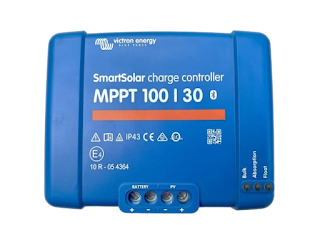STEP 8: CABLE SIZING FOR SOLAR POWER SYSTEM
Parameters Recap from our previous sizing steps
|
AMPERCITY TABLE FOR COPPER CABLE |
||||||
|
SN |
AWG/kcmil |
Approx.
Area (mm²) |
SWG
Equivalent |
Insulation
Type (90°C) |
Ampacity
in Conduit or Raceway |
Free
Air Ampacity |
|
1 |
14
AWG |
2.08 |
16
SWG |
THWN-2/THHN |
25
Amps |
30
Amps |
|
2 |
12
AWG |
3.31 |
14
SWG |
THWN-2/THHN |
30
Amps |
41
Amps |
|
3 |
10
AWG |
5.26 |
12
SWG |
THWN-2/THHN |
40
Amps |
55
Amps |
|
4 |
8
AWG |
8.37 |
10
SWG |
THWN-2/THHN |
55
Amps |
70
Amps |
|
5 |
6
AWG |
13.3 |
8
SWG |
THWN-2/THHN |
75
Amps |
95
Amps |
|
6 |
4
AWG |
21.15 |
6
SWG |
THWN-2/THHN |
95
Amps |
125
Amps |
|
7 |
3
AWG |
26.67 |
5
SWG |
THWN-2/THHN |
115
Amps |
145
Amps |
|
8 |
2
AWG |
33.62 |
4
SWG |
THWN-2/THHN |
130
Amps |
170
Amps |
|
9 |
1
AWG |
42.41 |
3
SWG |
THWN-2/THHN |
150
Amps |
195
Amps |
|
10 |
1/0
AWG |
53.49 |
2
SWG |
THWN-2/THHN |
170
Amps |
230
Amps |
|
11 |
2/0
AWG |
67.43 |
1
SWG |
THWN-2/THHN |
195
Amps |
265
Amps |
|
12 |
3/0
AWG |
85.03 |
0
SWG |
THWN-2/THHN |
225
Amps |
310
Amps |
|
13 |
4/0
AWG |
107.2 |
00
SWG |
THWN-2/THHN |
260
Amps |
360
Amps |
|
14 |
250
kcmil |
126.7 |
- |
THWN-2/THHN |
290
Amps |
420
Amps |
|
15 |
300
kcmil |
152 |
- |
THWN-2/THHN |
320
Amps |
480
Amps |
|
16 |
350
kcmil |
177.3 |
- |
THWN-2/THHN |
350
Amps |
530
Amps |
|
17 |
400
kcmil |
202.7 |
- |
THWN-2/THHN |
380
Amps |
575
Amps |
|
18 |
500
kcmil |
253.3 |
- |
THWN-2/THHN |
430
Amps |
665
Amps |
|
19 |
600
kcmil |
304 |
- |
THWN-2/THHN |
475
Amps |
750
Amps |
|
20 |
750
kcmil |
380 |
- |
THWN-2/THHN |
535
Amps |
855
Amps |
|
21 |
1000
kcmil |
506.7 |
- |
THWN-2/THHN |
615
Amps |
1035
Amps |
|
SUMMARY OF PARAMETERS AFTER EIGHT STEPS OF SIZING |
|
|
PARAMETER |
VALUE |
|
Daily Energy Consumption |
20.75 kWh |
|
Total Peak Power |
3430 W |
|
Days of Autonomy |
2 days |
|
Solar Hour |
4 hours |
|
Calculated Solar Array Value |
6.48 kW |
|
Number of Solar Modules |
22 pieces of 300W modules |
|
Battery Bank Size |
Approximately 960.65 Ah at 48V (with 90% DOD) |
|
Inverter Sizing |
5KVA inverter is ideal for the system |
|
Charge Controller Size |
170A (rounded up from 168.75A with a safety margin of 25%) |
|
Number of Charge Controllers |
2 (assuming 100A controllers are used) |
|
Cable Size from Arrays to Controllers |
4 AWG, 20 mm², 6 SWG |
|
Cable Size from Battery to Inverter |
3 AWG, 25 mm², 5 SWG |





Comments
Post a Comment